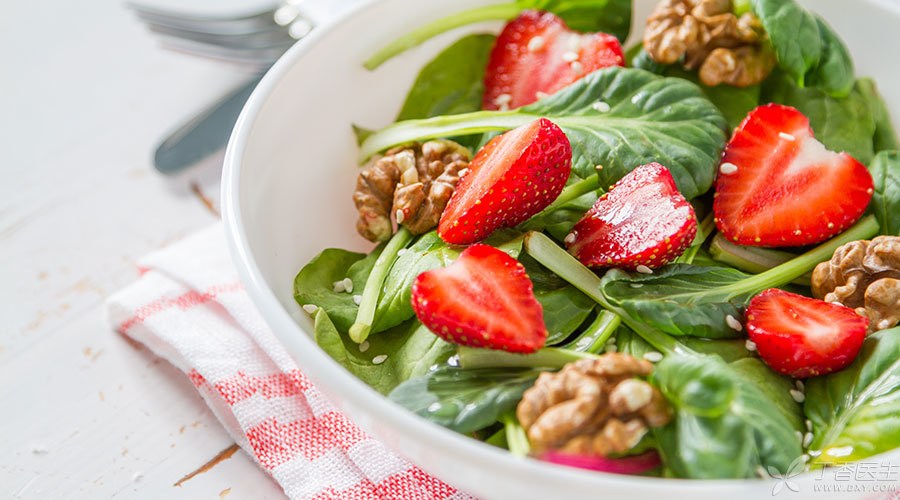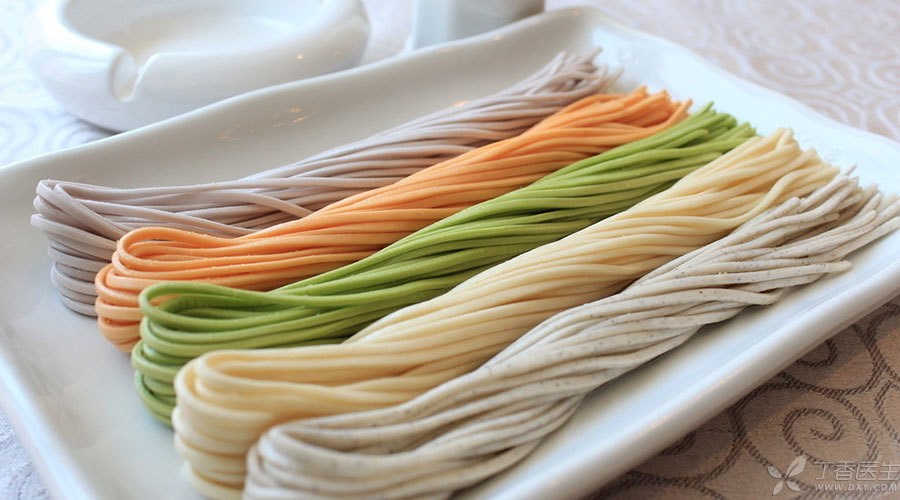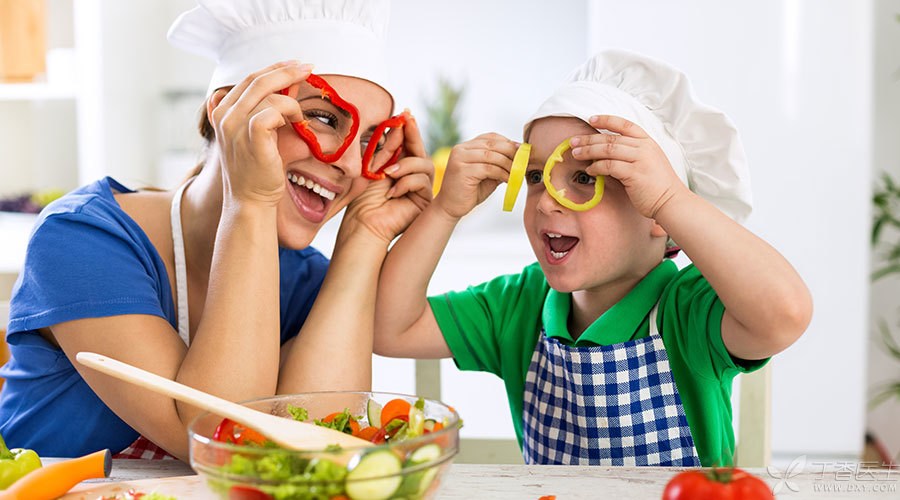
There is only one word to describe the recent weather, that is [hot, hot]!
The temperature is too high and the humidity is too high, not only adults will feel tasteless when they cannot eat, but also the babies in the family will not escape this [robbery].
If the baby doesn’t eat, it’s almost worrying about his parents. It’s often hard to let the baby eat one more bite even if he racks his brains.
In fact, in order to solve the problem that the baby does not eat, we must first understand the reason why the baby does not eat, and [symptomatic] is the best [drug].
The food is greasy and should stimulate the appetite.
In summer, the temperature is generally higher and the humidity is also higher. Such humid and hot weather will easily affect appetite. If the food is greasy again, the baby may not want to eat.
At this time, you can try to change the cooking method and use appetizing fruits and vegetables to increase your baby’s appetite.
1. Seasoning ingredients
When the appetite is not good, adding sour taste or some special fragrant ingredients to the food can often improve the appetite.
For example, adding onion, garlic, ginger, onion, vinegar and other materials when cooking can not only enhance the aroma of food, but also promote the appetite of babies.
Or with some appetizing acidic fruit and vegetable ingredients, such as tomato, lemon, pineapple, hawthorn, seabuckthorn, etc., to make tomato rice, lemon fragrant fish, pineapple shrimp, seabuckthorn yam, etc., which can not only promote appetite but also digest well.
2. Fish, Poultry, Meat and Egg
This kind of animal food is rich in high-quality protein, lipid, fat-soluble vitamins, minerals and other nutrients, which is very important for children’s growth and development, but it is relatively difficult to digest. For babies whose digestive tract development is not perfect, if the cooking method is not proper, it will inevitably be too greasy and affect the baby’s appetite.
Parents can try steaming, braising in soy sauce, cooking soup and other ways to reduce greasiness. For example, if making fish, making steamed fish, braising in soy sauce, boiling fish in soy sauce, or cooking fish soup can reduce greasiness very well.
3. Vegetables and Fruits
This kind of plant food can be made into stuffing, steamed buns, pies, etc. Even babies who do not like vegetables can increase their intake of vegetables in this way.
Or you can cut different fruits and vegetables into cubes, with fruits as the main vegetables as the auxiliary, with nuts crushed, and then pour yogurt or salad to make fresh and delicious fruit and vegetable salad, which is the most suitable appetizer for summer.

The staple food is monotonous and changes the pattern.
Rice and noodles are not the only staple foods. If the baby’s staple foods for three meals a day, seven days a week, do not change much, there will inevitably be protests.
If parents can enrich the variety of staple foods when preparing food for their babies, create a feeling that every meal is different for their children, and make them always expect what for the next meal, they will naturally gradually become interested in eating.
Parents may as well start from the following three aspects to gradually enrich the baby’s staple food:
1. Diversification of ingredients
In addition to refined white rice flour, parents can also choose coarse cereals, potatoes, miscellaneous beans, or other starch-rich vegetables and nuts as some staple foods.
Coarse cereals: red rice, black rice, millet, oats, wheat kernels, corn, sorghum, etc.
Potatoes: potatoes, sweet potatoes, purple potatoes, taro, yams, etc.
Miscellaneous beans: red beans, mung beans, kidney beans, kidney beans, flower beans, etc.
Starch-rich vegetables: corn, water chestnut, pumpkin, etc.
Starch-rich nuts: Chestnuts and lotus seeds are starch-rich plant seeds.
2. Diversification of colors
Colorful food can arouse the baby’s interest and promote the baby’s appetite.
For example, various vegetable juices can be added when kneading dough, and colorful dough mixed with vegetable juice can be used to make noodles of various colors, as well as colorful dumplings, etc. Colorful colors can greatly increase the baby’s interest in food.
3. Diversification of forms
The staple food can be not only rice and noodles, but also porridge, wonton, dumplings, pancakes, etc. Sometimes you can get unexpected results by slightly changing the form of the staple food.
Rice can be made into pot edge paste, rice rolls, turnip cake, sushi, paste, etc.
Flour can be made into steamed buns, flower rolls, steamed buns, dumplings, pancakes, pizza, etc.
Potatoes can be made into potato cakes and mashed potatoes.
Pumpkin can be made into pumpkin pie, pumpkin mud, pumpkin soup, pumpkin sponge cake, etc.

There is less dinner and snacks are supplemented.
The heat is unbearable. Sometimes even if parents have already spent a lot of time on [rice] [food], the baby still doesn’t eat much. Don’t force the baby to finish the meal at this time. Forcing may make the baby rebellious about eating and even refuse to eat.
If the baby eats less for dinner, parents can prepare some healthy snacks to supplement the baby’s meal. Ready-made healthy snacks or making delicious and healthy snacks by themselves are all good choices.
1. Healthy snacks
A portion of fruit, a handful of nuts, a cup of milk or yogurt, such ready-made snacks are delicious, healthy and very convenient for the baby to supplement between meals.
2. Make fruit and vegetable juice
Different vegetables and fruits can be matched to make fruit and vegetable juice. The taste of fruits can be used to blend the blandness of vegetables, and the intake of vegetables for babies can also be increased. However, remember not to remove dregs and try to keep their dietary fiber.
Step 3: Make flavored milk
Milk is rich in calcium and high-quality protein. Appropriate increase in milk intake is conducive to baby’s growth and development. However, many children seldom drink milk because they don’t like the taste of original milk. At this time, they may as well add fruits or grains to milk to make rich flavor milk.
Add some fruits with low fruit acid content, such as mango, banana, durian, etc. to milk to blend the aroma of fruits with milk aroma to make milkshakes with various flavors.
Or milk can be mixed with red beans, purple potatoes, pumpkins and other coarse cereals and beans to make red bean milk, purple potato milk, pumpkin milk and the like.

Only when you love food can you love eating.
When children do not eat, parents often think that the food is not to the baby’s appetite, or the food is not delicious enough and the baby does not like it.
In fact, it is very important to change the ingredients or cooking methods and spend more time on food to increase children’s appetite, but it is equally important to cultivate children’s interest in food.
To cultivate children’s interest and love in food, one can start by taking children to buy vegetables together!
- Go to the market with your children to buy ingredients, teach them to distinguish seasonal fruits and vegetables, discuss eating what today with your children, and jointly decide to buy what ingredients. Plant some fruits and vegetables with your children, such as tomatoes, peppers, potatoes, shallot, etc., and observe the growth process of vegetables together to understand the nutritional value of different vegetables. In the process of making food, children can participate in some simple links, such as cleaning food materials, squeezing fruit juice, stirring, etc., so that children can participate in these activities within their capabilities, complete food making together with children, and turn tasting food into enjoying their own labor achievements.
If children like food and love food, will parents still worry that their children do not like eating?
Copyright of Clove Garden. No reprinting is allowed without permission.
